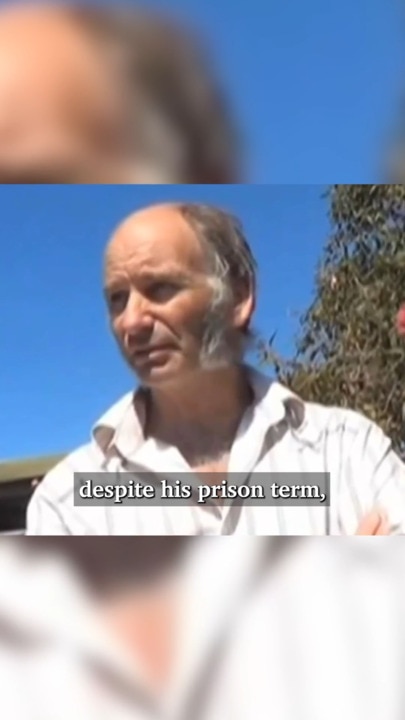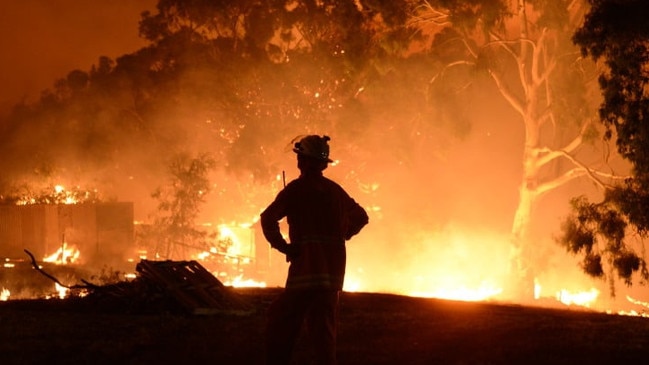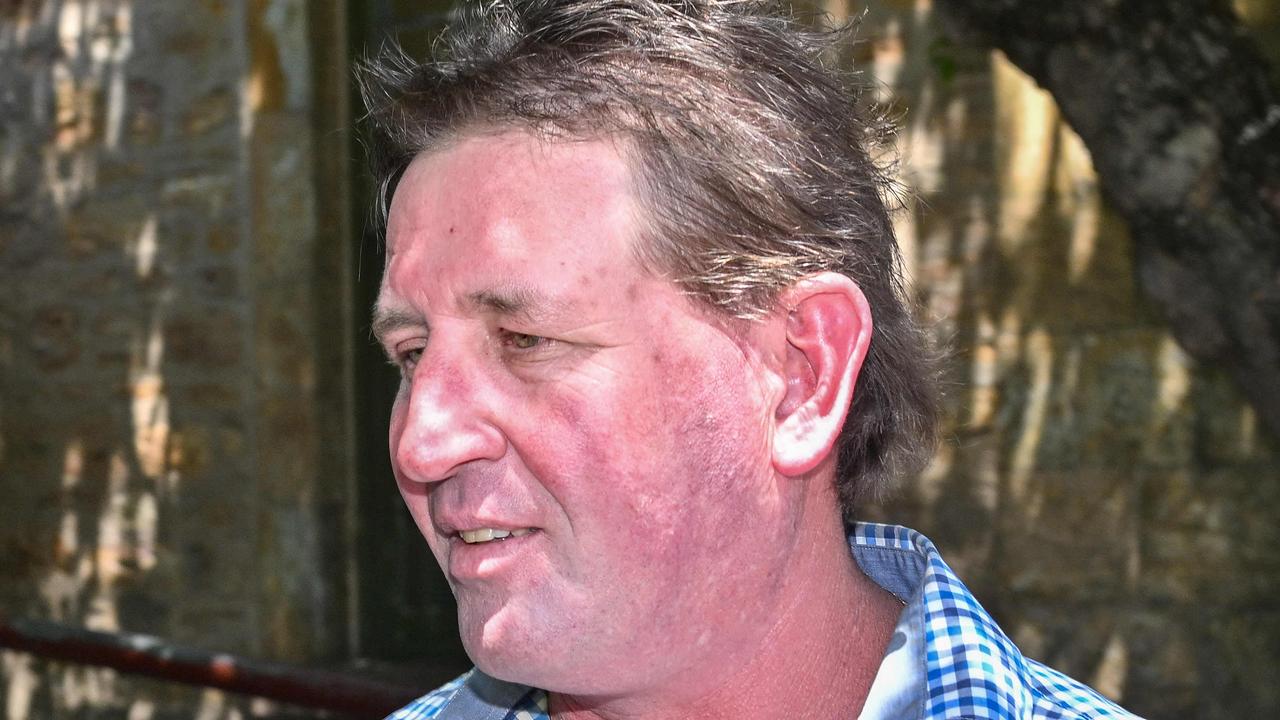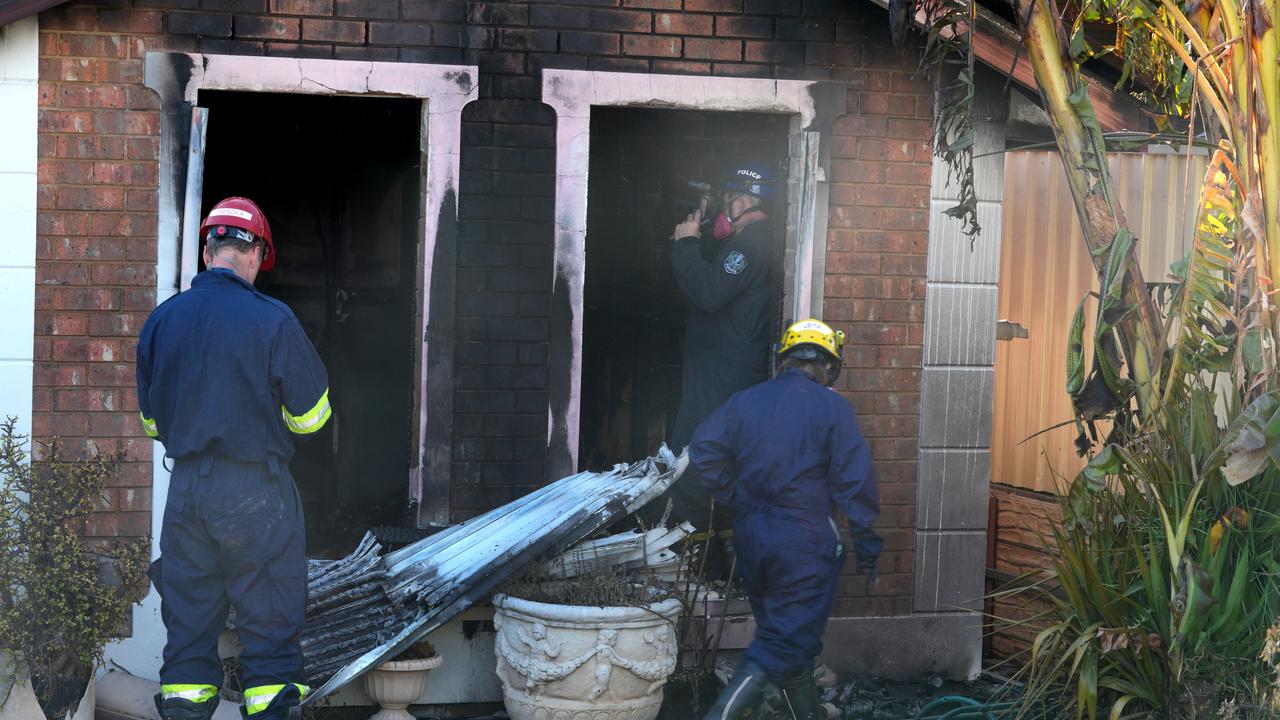SAPOL makes legal history with court order to track arsonist Malcolm Vawser during fire season
The threat they pose to lives, homes and the environment is catastrophic. Now police have a new weapon against bushfire arsonists – with four firebugs already in their sights.

Police & Courts
Don't miss out on the headlines from Police & Courts. Followed categories will be added to My News.
Three of SA’s worst arsonists will be electronically tracked for the rest of their lives under new court orders, while 70 more “persons of interest” will be monitored this bushfire season.
This week, former CFS volunteer and convicted firebug Malcolm Vawser became the first person subjected to court-ordered monitoring during periods of high fire risk.
The Advertiser can reveal SA Police will seek to have three more convicted arsonists restrained under Bushfire Offender Monitoring Orders (BOMO).
Assistant Commissioner Philip Newitt said the orders gave police a new tool in their efforts to be proactive against bushfires lit both “intentionally or through reckless behaviour”.
They would be assisted, he said, by Police Security Officers trained by studying another infamous case – catastrophic Cherry Gardens firebug Gregory John McGannon.
Assistant Commissioner Newitt said that, between November this year and April next year, up to 64 people would be monitoring the state for arsonists 24 hours a day.
“For us, this really does constitute a massive volume of people who are dedicated to bushfire prevention,” he said.
“Vawser is the subject of first bushfire offender order made, and there are another three (offenders) we are looking at for the issuing of orders.
“One is female and currently serving out a term of imprisonment on home detention, and she will likely be approved for parole later this year.
“The other two are males, both parolees … our job is to prepare BOMOs in advance so that we can provide the community with reassurance when these individuals come out.”
WHAT ARE BUSHFIRE OFFENDING MONITORING ORDERS?

Legislated in 2022, BOMOs allow police to apply to the Magistrates Court for controls to be placed upon convicted bushfire offenders.
The orders require the offender to report to police, and carry an electronic transmitter on their person, throughout the fire danger season.
Once imposed, the orders are permanent – they operate every year without renewal, unless an offender can convince a court to lift them.
Assistant Commissioner Newitt said SA Police had “struck an agreement” with the Department for Correctional Services to carry out the monitoring.
“We will utilise the facilities provided by the Department to enable the BOMOs, and offenders will be monitored by its staff.”
He said that, prior to the creation of BOMOs, firebugs were subject to strict parole conditions or extended supervision orders, through which their movements were tracked.
“Bushfire offending carries a maximum of life imprisonment, and people have been issued with penalties ranging from suspended sentences to terms of imprisonment,” he said.
“Upon the end of their sentence they’re given parole but, after parole, there is no more monitoring.
“BOMOs fill that gap and, I would imagine, meet the community’s expectations that people with a predisposition for lighting fires are being effectively monitored.”
WHO IS FIREBUG MALCOLM VAWSER?

In August 2015, Malcolm Vawser received a seven-year prison term and 4 ½-year non-parole period, having been found guilty at trial of intentionally lighting a bushfire.
A year earlier – just months after receiving a gold watch for his CFS service, and immediately after a training session – he lit a blaze at Frith Rd, Clarendon.
Vawser insisted he was only in the area because of a “spontaneous” decision to pray somewhere he could have “solitude with God, as Jesus did in The Bible”.
He also claimed the matches and incense sticks police found in his bag were leftovers from a “humane” effort to combat the smell of bats mating in the roof of his church.
Jurors rejected his claims, and the court subsequently heard investigators found homemade explosives and aircraft-bombing data on his home computer.
Prosecutors said that made Vawser “a dangerous man”, but he went to his cell claiming police had “doctored photographs” to “set him up”.
Vawser was denied parole in 2019, with the Board concluding he lacked “insight” into his offending and “acceptance” of the community’s concern about him.
WHAT HAPPENED WHEN MALCOLM VAWSER WAS RELEASED?

In 2021, the Board dubbed Vawser “a serious risk to the community if unsupervised” and recommended he be placed on a three-year extended supervision order.
That subjected Vawser to parole-like conditions despite the expiration of his sentence, including GPS tracking and psychological assessment.
Doctors noted Vawser “reported having visions of the future from God” but “does not have visions on a day-to-day basis”.
They said he still insisted his incense sticks were to combat bat odour, and claimed an arsonist had approached him in prison and confessed to “setting him up” for the crime.
His stubborn and “unmovable” belief that the justice system had “a vendetta against him” was, they said, one of several factors that placed him at a high risk of reoffending.
Those concerns prompted police to seek a BOMO upon Vawser.
In court documents, police said Vawser remained “a high risk of violent reoffending”.
“His immovable lack of insight into and attitude toward his offending makes him resistant to treatment to address the factors associated with his risk of reoffending,” they said.
“He maintains he is innocent of the bushfire offence.”
The court granted the order, which will operate in perpetuity.
HOW DO YOU SPOT A FIREBUG?

Assistant Commissioner Newitt said police’s anti-bushfire initiative, Operation Nomad – which has been active for 30 years – had developed tools to identity potential threats.
“We have about 70 persons of interest that we will either assess or make periodic visits to, depending on the level of risk they present,” he said.
“Only three of those people are under the age of 18 … the majority are adults and the majority of those adults are male.”
He said potential risk factors included observed prior behaviour, previous convictions and the “time of life” being experience by the person.
“Most of the people we deal with, as police, are experiencing some kind of stressors that lead them to commit an offence in the first place,” he said.
“In this case, these are stressors and circumstances peculiar to intentional bushfire-lighting behaviour.”
He said officers also use licence plate recognition technology and are trained using past case studies, particularly that of Gregory John McGannon.
McGannon is, like Vawser, a former CFS volunteer – in 2021, he lit seven fires that destroyed two homes, 19 buildings, two vehicles and 2594ha of land, and devastated countless lives.
Witnesses described his blaze as “a tsunami of flame”, while experts said it was so ferocious that it “created its own weather system” over the Adelaide Hills.
McGannon was convicted at trial of seven counts of arson and one count of driving dangerously to escape police pursuit, and jailed for 13 years.
DON’T BE PART OF THE BUSHFIRE PROBLEM

Assistant Commissioner Newitt said intentional firebugs were but part of the problem faced by police, the CFS and SES volunteers each year – the other issue was negligence.
“There are still people who use power tools or conduct concerning farm work on days of high, extreme and catastrophic fire danger,” he said.
“That’s why Operation Nomad has an educational campaign (purpose) as well.”
He urged people to listen to CFS alerts, and check its website for updates, throughout the fire season, and speak to volunteers “if in doubt”.
“Intentionally-lit or caused by recklessness, bushfires create the risk of immense loss of life and large-scale property destruction,” he said.
“However they’re caused, we will enforce the law and take positive action to prevent further fires.”





